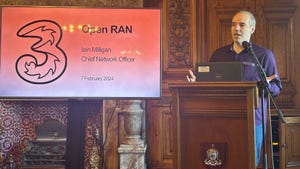Princeton Plays Its Trumpf Card
Princeton Lightwave aims to survive by selling its manufacturing facility to Trumpf, a German industrial laser maker
August 16, 2002

Laser startup Princeton Lightwave Inc. (PLI) has taken drastic but sensible steps for its future, by selling off its manufacturing facility and a major portion of its intellectual property portfolio to the Trumpf Group, a German manufacturer of industrial lasers. The financial terms of the deal were not disclosed.
Trumpf describes the action as an acquisition, but on closer inspection, it look more like an outsourcing agreement. It also marks the entry of a new player into the photonics manufacturing arena.
The key part of the deal is the sale of 15,000 square feet of cleanroom space, along with the equipment it contains -- a facility that would have cost up to several tens of millions of dollars to set up -- to Trumpf. This allows Trumpf to start up in the photonics manufacturing business, and it's first client will be (ta dah!) Princeton Lightwave.
Trumpf has also hired a significant number of Princeton Lightwave's employees to run the facility, including Louis Wagman, the startup's former COO and VP of operations. It has also bought the portion of Princeton's intellectual property portfolio relating to high-power lasers, to ensure that it can manufacture the components without infringing on anyone's patents.
"We were vertically integrated, but that's not popular any more," says John Connolly, Princeton's cofounder and director of engineering. "Almost all new startups follow the fabless model." Princeton's not become totally outsourced, however -- it still retains 8,000 square feet of cleanroom for testing and packaging in the same building as the manufacturing.
Both parties are pleased with the deal, it seems. Connolly says it puts the startup on a much firmer financial footing. "It certainly permits us to continue to do business in the way that we want," he says. "No one wants a relationship with a small business unless we have solid financial plans." He figures Princeton can continue for "multiple years" as a fabless outfit, before running out of money.
The fabless Princeton Lightwave is a lot slimmer. At its peak, the company had 75 employees. Before the deal with Trumpf it was at 45. It now numbers around 20 to 25 employees, according to Connolly. But since Trumpf's new photonics division employs 20 people, it suggests that nobody was laid off -- they were all transferred.
Catherine Flynn, a spokeswoman for Trumpf, told Light Reading that the company wanted to enter the semiconductor manufacturing field, and the deal with Princeton Lightwave gave it a fast way in.
From the point of view of telecom components, it would appear to be a rather odd time to be making such a move. If top players like Agere Systems (NYSE: AGR) are seeing so little action in the optical components space that they've decided to get out of it altogether, then it suggests that the business opportunity for manufacturing optical components isn't that great right now (see Lights Out for Agere's Opto Biz).
The likely explanation is that Trumpf will be developing high-power lasers for other applications. Indeed, Flynn says that not all 20 staff in the facility will be needed to manufacture Princeton Lightwave's products, although she can't say what they will be doing.
Princeton Lightwave says it expects to announce the news next week.
— Pauline Rigby, Senior Editor, Light Reading
http://www.lightreading.com
You May Also Like
.jpg?width=300&auto=webp&quality=80&disable=upscale)









